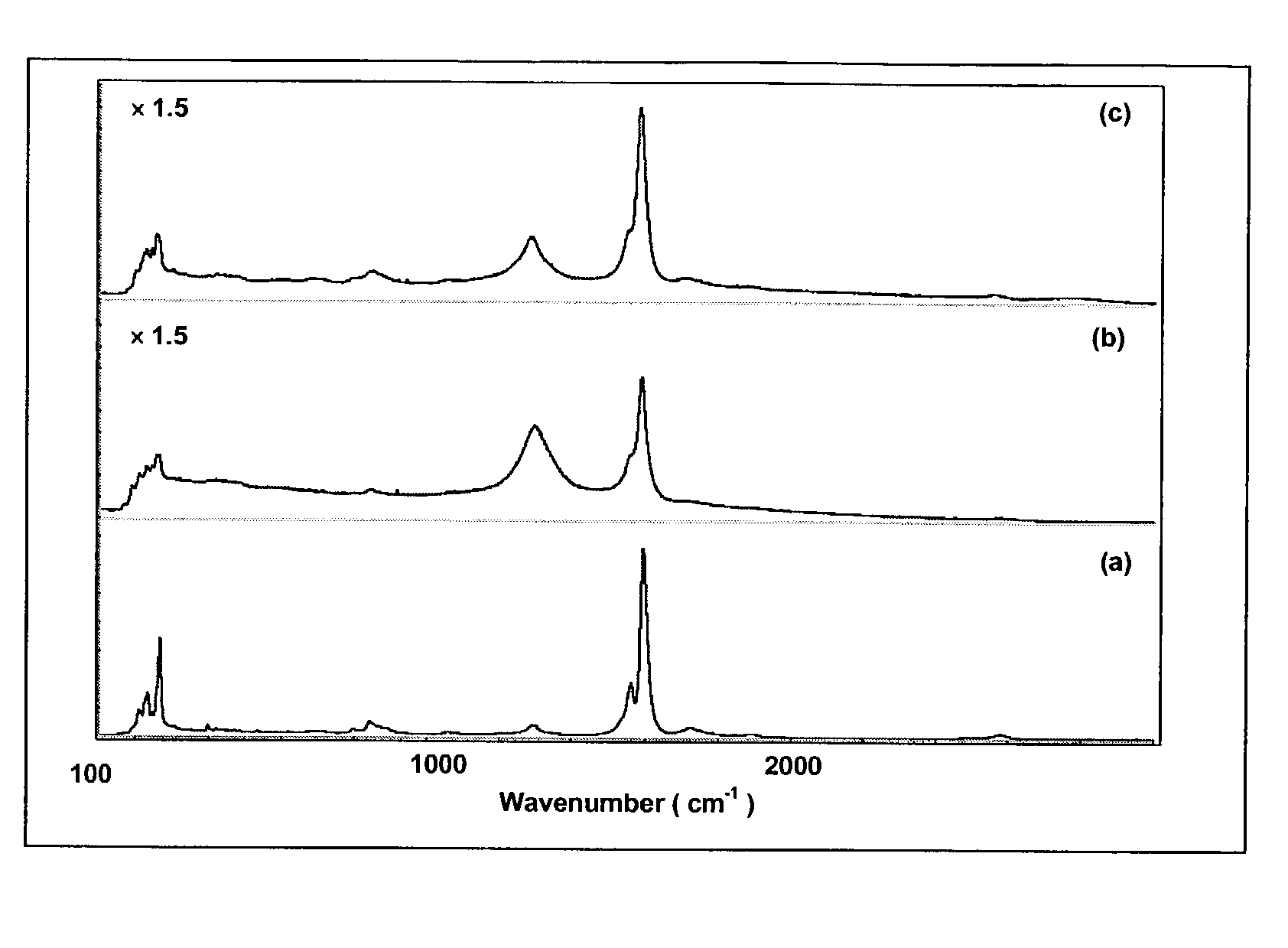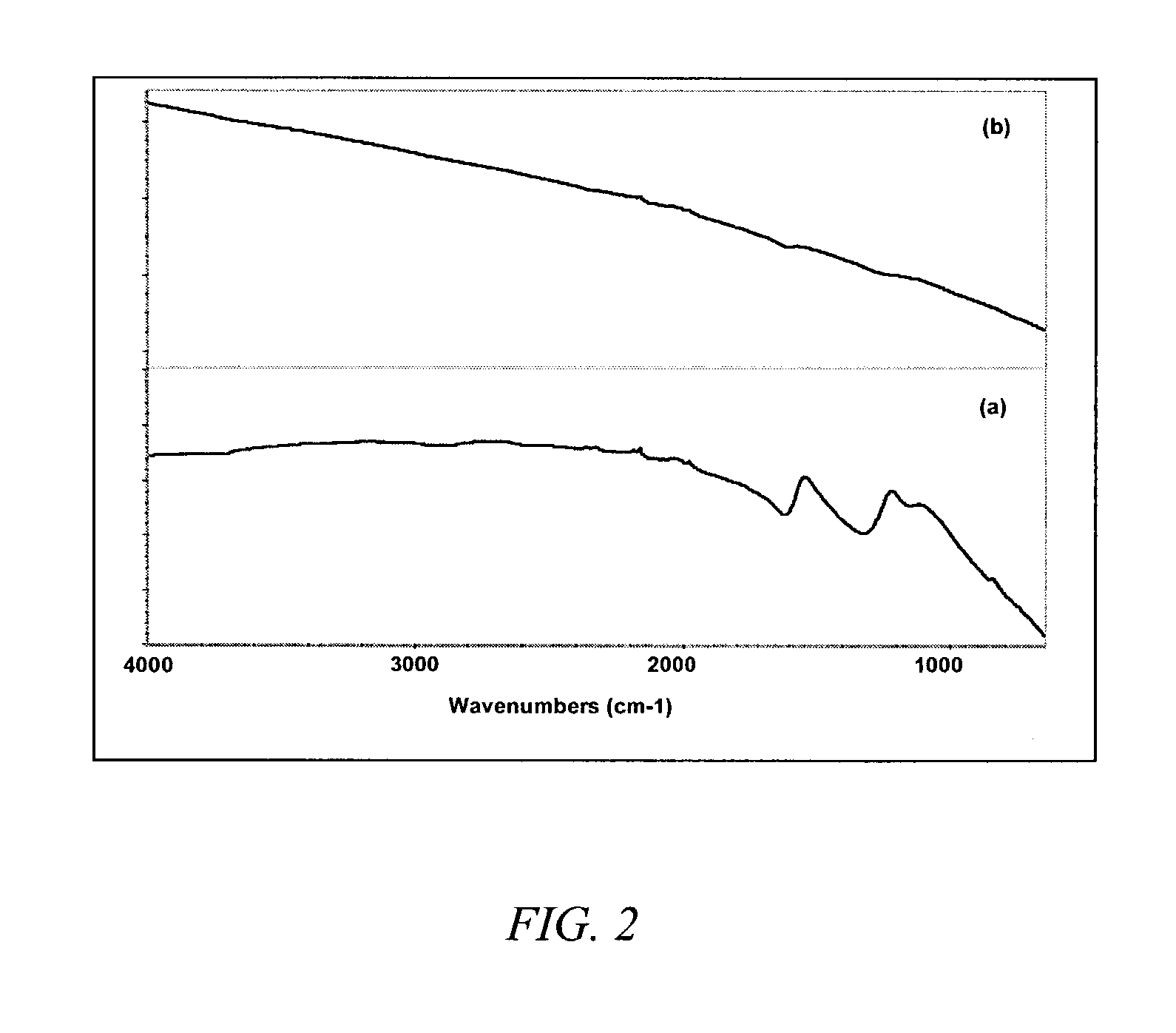Method for cutting single-wall carbon nanotubes through fluorination
a carbon nanotube and fluorination technology, applied in the field can solve the problems of short lengths that cannot be economically or conveniently obtained from known single-wall carbon nanotube production processes, nanotubes' extreme lack of solubility in water, and the strong propensity of single-wall carbon nanotubes, etc., and achieves the effect of higher voltag
- Summary
- Abstract
- Description
- Claims
- Application Information
AI Technical Summary
Benefits of technology
Problems solved by technology
Method used
Image
Examples
example 1
[0041]This example demonstrates the cutting of single-wall carbon nanotube by fluorination. HIPCO® single-wall carbon nanotubes were produced using an all-gas phase method involving the high-temperature, high-pressure, iron-catalyzed, disproportion of carbon monoxide. (HIPCO is a registered trademark of Carbon Nanotechnologies, Inc., Houston, Tex.) The average diameter of the nanotubes produced by this method is typically about 1.0 nm.
[0042]Before fluorination, the SWNT were purified to remove amorphous carbon and residual iron catalyst particles, most of which were encapsulated in carbon shells. The purified single-wall carbon nanotubes were then placed in a temperature-controlled furnace having a continuous helium purge.
[0043]The temperature of the furnace was controlled to 50±5° C. F2 and helium were introduced into the furnace as a mixture of such that the concentration of F2 was about 1 vol % in the mixture. The 1% F2 / He mixture flowed over the SWNT for about 2 hours at a contr...
example 2
[0053]This example demonstrates a series of experimental conditions that can be used to produce partially-fluorinated single-wall carbon nanotubes having different carbon-fluorine stoichiometries. Variables included fluorination temperatures in the range of about 50° C. and 150° C., fluorination times in the range of about 1 hour and 4 hours and concentration of fluorine (F2) gas in the range of 0.2 vol % and 10 vol %. Different degrees of fluorination for single-wall carbon nanotubes were obtained from different experimental conditions. The degree of fluorination is expressed in terms of CFx stoichiometry, where x ranged from x=0.06 to x=0.3. The experimental conditions for fluorination and the degree of fluorination of the nanotubes are summarized in Table 1.
[0054]
TABLE 1Reaction ConditionsFluorinationFluorinationConcentration ofDegree of Fluorination:TemperatureDurationF2 in gas mixtureCFx in SWNT(° C.)(hours)(vol %)(x)501100.20502100.20503100.2250110.1050210.2150310.205010.20.04...
example 3
[0055]This example demonstrates defluorination of fluorinated SWNT to remove some fluorine from the nanotubes. HIPCO single-wall carbon nanotubes were fluorinated to carbon-fluorine stoichiometries of CF0.25 and CF0.5. The fluorinated nanotubes were defluorinated to produce partially fluorinated nanotubes having carbon-fluorine stoichiometries of about CF0.05 (about C20F) and about CF0.017 (about C60F), respectively.
PUM
 Login to View More
Login to View More Abstract
Description
Claims
Application Information
 Login to View More
Login to View More - R&D
- Intellectual Property
- Life Sciences
- Materials
- Tech Scout
- Unparalleled Data Quality
- Higher Quality Content
- 60% Fewer Hallucinations
Browse by: Latest US Patents, China's latest patents, Technical Efficacy Thesaurus, Application Domain, Technology Topic, Popular Technical Reports.
© 2025 PatSnap. All rights reserved.Legal|Privacy policy|Modern Slavery Act Transparency Statement|Sitemap|About US| Contact US: help@patsnap.com



